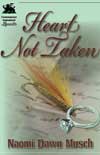You see it all the time in stories … the hero has a sword so awesomely big (hey, he got those muscles somewhere, didn’t he?) that the heroine can barely lift it. I even wrote one such sword into my own story …
“If you are Lady of this kingdom, then I would be your most loyal subject. Please accept my sword as a token of my devotion.”
Though she intended to reproach him, her voice quivered when she spoke. “This is not a thing to treat lightly, Kolin Penwelle.”
“I do not offer it lightly,” he replied softly.
She slanted a glance at Brenna, who stood stunned—but at the Princess’ look, Brenna nodded shortly and whispered, “Accept it, my lady.”
Very hesitantly then, Cymalyn reached out to slip her hand around the hilt. The weapon was too heavy for her, however; and as soon as Kolin released the blade it fell point down against the cobbles with a dull clang. Abashed, she put out the other hand as well; but with all her strength, she could only raise the sword a few inches. Obviously, she would not be able to duplicate the acceptance maneuver she had seen her father perform so many times …
And then one day it occurred to me, maybe I should do some reading up on swords. I realized that I even had a main character who was a bladesmith, but I’d never done a lick of research on what that actually entailed. I knew of course that he needed a forge, an anvil, and a hammer. (I grew up with horses and was always fascinated by the shoeing process … that had to translate at least in part, didn’t it?) But what else could I be missing?
To be fair, this was in the days before the Internet, and research would have meant trotting down to my local library and asking a real live person to help me find a book on metalsmithing … to the likely accompaniment of raised eyebrows and questions on why a Midwestern girl needed that kind of information. So … I kept putting it off.
Then came adulthood, and the Internet, and with it some measure of bravery, I guess. I started researching. In the process I discovered that the average sword—longsword that is, and that’s what they’re properly called, not a broadsword (the only blade properly called a broadsword is this basket-hilted Scottish thing … go look it up)—is actually only two to three pounds.
Yep, that’s it. Three pounds. The longest of German and Scots longswords might weigh five to six pounds, but none of those are beyond the ability of the average woman—or child—to pick up and lug around.
Well, there went my dramatic scene of the princess almost dropping the sword of her marauder cousin who’s trying to swear fealty to her. Bwaaahahahahaha! I did manage to find a way around it.
Oh, and I also found it would take my bladesmith more than a day or two to craft a dagger fit for royalty.
So what’s my point in all this? (Pun intended.)
Don’t be afraid to do your research.
Sure, I’ve had to change whole story ideas when I found out that facts didn’t support them, but making a reasonable effort to get your facts straight challenges you to be a better writer. And—it’s fun! I don’t remember history or science or anything else in my school years being half as fun as chasing down the odd and obscure in sword lore.
Just go easy, however, on the next writer you meet who seems to think that the really big swords all weigh thirty pounds …
















Speak Your Mind
You must be logged in to post a comment.